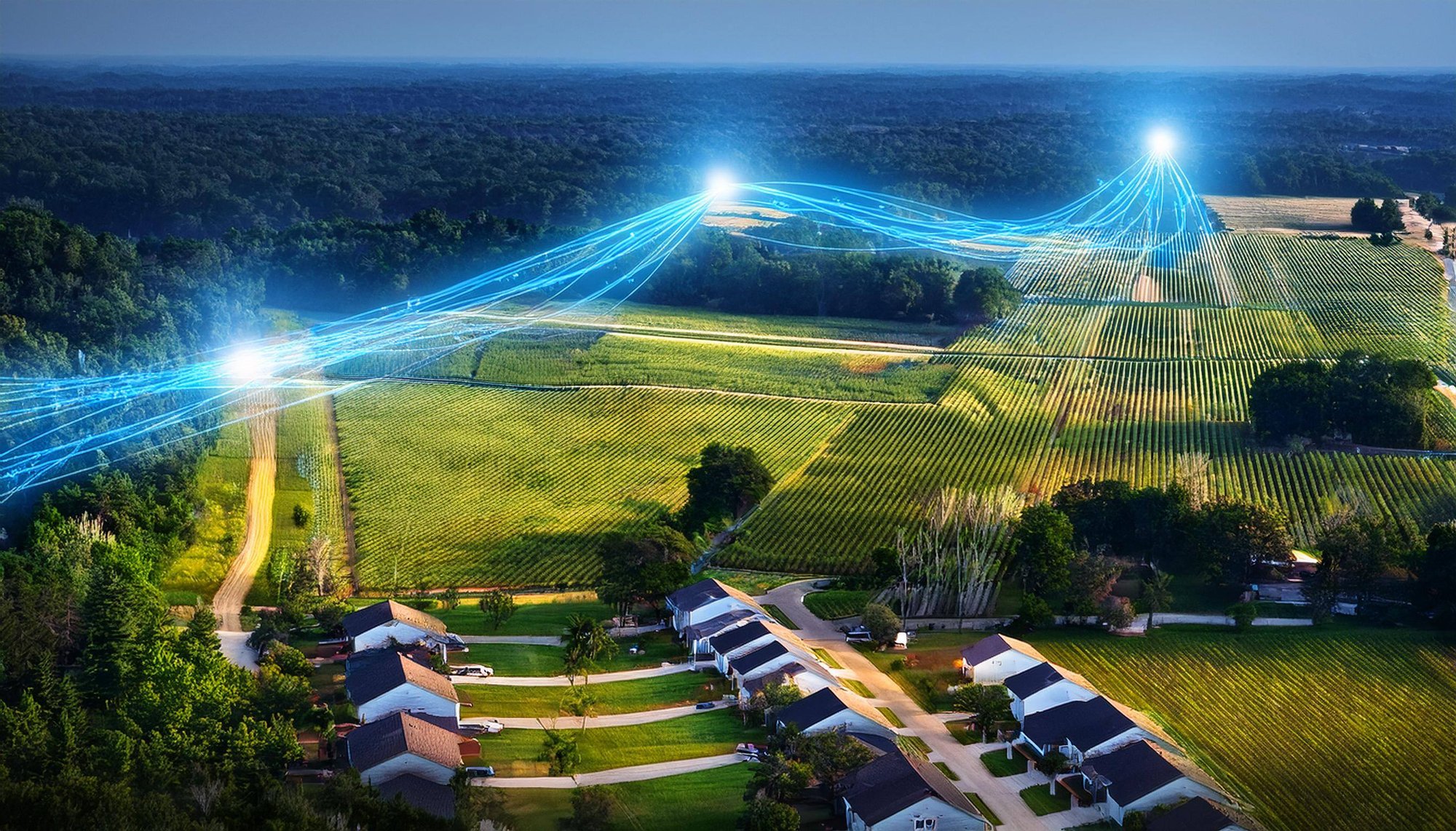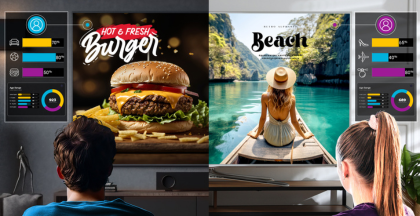The Ultimate Guide to IPTV for Video Streaming
Over the past few years, the entertainment broadcasting industry has seen streaming services rise in popularity. Statista projects the overall revenue brought in by streaming services will reach a market value of approximately $116 million within the next five years.
Over-the-top (OTT) video services are becoming the most common form of media consumption as the ease of personalization of media streaming services ensure their continued success.
Today, video service providers leverage streaming services to bridge the gap between modern and traditional broadcasting. The most prominent of these streaming solutions is IPTV. IPTV services combine the benefits of traditional broadcasting with the convenience of streaming content from any location and device.
What Is IPTV?
IPTV refers to internet-based protocol television, which is a form of broadcasting. IPTV differs from other forms of broadcasting, like cable or satellite, in that it uses the internet to deliver linear TV programs, live TV, or on-demand content.
What Differentiates IPTV Services from Cable and Satellite Services?
Personalization with IPTV
One of the significant ways IPTV sets itself apart from other broadcast models is how IPTV enables personalization. An IPTV service lets users select the content they want to watch while cable and satellite TV broadcasts are less dynamic. On cable and satellite TV channels, what you see is what you get. Viewers can only watch the content being broadcast on the channel at that specific time.
IPTV combines the personalization of streaming and digital video services and the convenience of easy access from any location and device with the content from broadcast television.
IPTV & System Architecture
Another way IPTV differs from other forms of broadcast television is related to system architecture. Cable and satellite TV requires the subscriber to watch specific channels available within the dedicated signal that the channel is broadcast on.
With IPTV, viewers can store previous programming and access advanced features like catch-up TV and network DVR (NDVR). NDVR lets users store content on the service provider’s network versus the consumer's private home.
Cable TV requires laying miles and miles of cable, with a video headend to manage and maintain. Satellite TV requires a video headend that is equipped to receive the satellite signals, process the content, and distribute either directly to the consumer or to a distribution network. With 5G on the horizon, satellite distribution models may not be the most cost-efficient for some service providers as C-Band reclaim constraints increase.
On the other hand, IPTV makes it possible to deliver media feeds directly to the subscriber’s set-top boxes over the internet. Using the internet lets service providers leverage a system architecture that eliminates costly headend equipment and can help streamline the media processing and delivery workflows.
How IPTV works
Although IPTV has several commonalities with traditional television, the IPTV experience is more similar to what users are used to seeing on internet-based platforms. With an IPTV service, when a viewer selects a video, program, or any form of content, the content from several source servers is divided into data packets and transmitted over the internet. The video servers transmit the content to subscribers via their internet connection.
IPTV architecture is highly dependent on the IPTV providers, but two main models are used: centralized and distributed. Centralized architecture refers to the model in which all content is stored on a central server, removing the need for a comprehensive content distribution system. Distributed IPTV architectures, on the other hand, are equally scalable but have bandwidth advantages and system management features that could make the distributed model a more relevant option for larger systems.
What’s Happened to IPTV and Where Is the Industry Going?
SVOD (subscription video on demand), streaming services, and other internet-based entertainment platforms now compete with IPTV service offerings, and IPTV architecture has slowly become outdated.
IPTV seems like the next logical step for entertainment distribution services and has been steadily increasing in popularity worldwide; however, IPTV is nearing the end of its growth cycle. From a revenue standpoint IPTV is expected to remain flat due to the growing competition of SVOD services and other streaming services.
The time has come for IPTV to evolve.
Introducing IPTV 2.0 for Full Streaming
The original IPTV system includes OTT (over-the-top) and unicast software, allows distributors to scale their operations efficiently, and allows users access on all their devices through a single application. Still, with the exponential rise of streaming services that offer similar benefits to IPTV, the architecture needed for IPTV seems clunky and out of date. The next step for IPTV is to begin the transition into offering the full benefits of streaming services.
Currently, most streaming services offer three significant advantages:
- Enhanced user experience: most content is higher quality and in at least HD resolution
- Personalization: content is personalized to suit each user's interests and viewing preferences.
- Increased advertising revenue opportunities: personalization software makes it easier for companies to gather data for targeted advertising campaigns. It also enables more advanced techniques for targeted advertising, including server-side ad insertion (SSAI).
When applied to IPTV services, this last advantage would make advertising through IPTV more attractive to other companies and increase the revenue the IPTV services draw in.
In addition, applying advanced transcoding software and eliminating the need to re-buffer content, provides users with a consistent stream of high-resolution content regardless of their internet connection quality.
The Next Generation of IPTV
IPTV 2.0 revolutionizes the clunky, legacy architecture of the original IPTV system, making features such as set-up boxes obsolete. The content stream can be received by a growing installment of connected TVs, streamlining the entire system's architecture. Instead of managing several versions of the same channel, the system must now only manage one channel encoded with multi-profile ABR. This also eliminates the need for a multicast network and supports several multicast set-up boxes.
Unlike the IPTV 1.0, which comes in two tiers to support different devices, IPTV 2.0 allows users to support all their devices, including their television, with a single application. Developers can innovate and enhance their streaming services at the fast pace of mobile applications.
Adding in third-party services, introducing social apps, and customizing content by user or region are simple with IPTV 2.0. IPTV providers can now upgrade their services quickly and easily, leading to significant increases in user satisfaction and revenue.
Once multicast is no longer a barrier, IPTV service providers also have the opportunity of reaching a wider audience, including those outside of their network or those in geographically distant locations. The elimination of multi-cast also simplifies the implementation of targeted advertising, allowing distributors to sell their ad inventory at a higher CPM value.
The Benefit of Cloud-Native IPTV
Packaging and origin deployed in the cloud allows service providers to benefit from the cloud’s inherent scalability and flexibility. The cloud offers new content personalization workflows, and eases implementation of personalized and dynamic advertising. It also enables streaming directly to off-net subscribers.
How to Best Leverage IPTV to Gain and Retain Video Market Share
Even in its original form, IPTV has the potential to corner the video content streaming industry. Unlike other platforms, IPTV 2.0 easily supports a unified headend system. The minimal architecture needed for IPTV 2.0 ensures that IPTV providers can almost seamlessly implement a unified headend by transferring to the newer system.
A unified headend is a solution in which the hardware and software of the system support every step of service generation both for OTT and broadcast delivery. A unified IPTV and OTT workflow participates in improving user experience. Users receive high-quality and high-resolution content, while service providers can gain efficiencies for service delivery across all devices.
In addition to streamlining operating processes and simplifying the system's architecture, adopting a unified headend optimizes the troubleshooting process, allowing providers to offer users a service that ranks high above what the competition can offer.
IPTV 2.0 is the video streaming solution of the future and has the potential to rejuvenate and bring new life to an industry.
Using Harmonic’s VOS360 for IPTV 2.0
Harmonic’s VOS®360 Media SaaS is the world’s most trusted video processing and delivery platform.
With all the benefits of cloud streaming, VOS360 can enhance the services of any streaming service provider and offer unique functions such as live or file transcoding, packaging and origin, dynamic real-time CDN path selection, targeted advertising, VOD, free ad-supported TV, time-shift, and network DVR.
VOS®360 offers high-quality streaming from source to screen and simplifies day to day operations without compromising on quality. Special features such as flexible scaling options allowing streaming service providers to optimize video sharing and scale events to meet viewer demand.
To learn more about how our VOS360 media supports these exciting new offerings, let’s talk.









